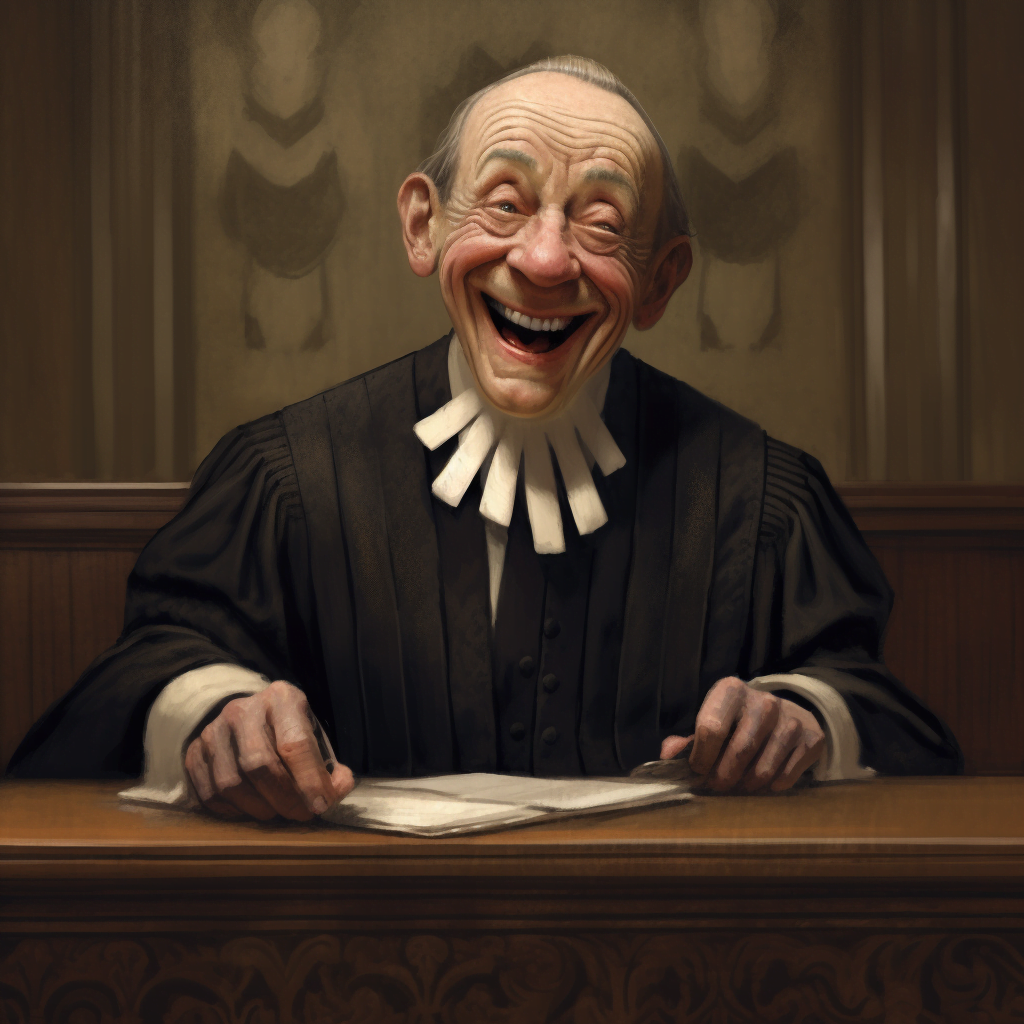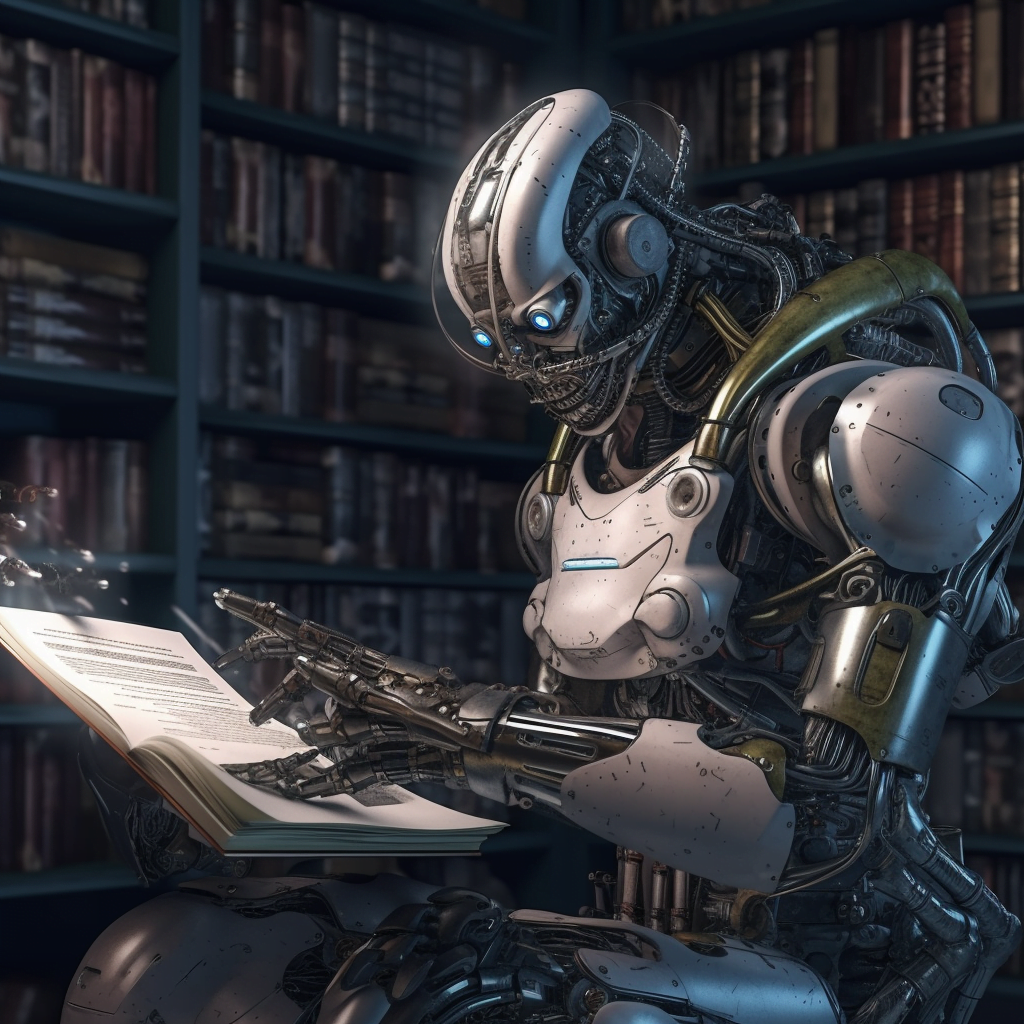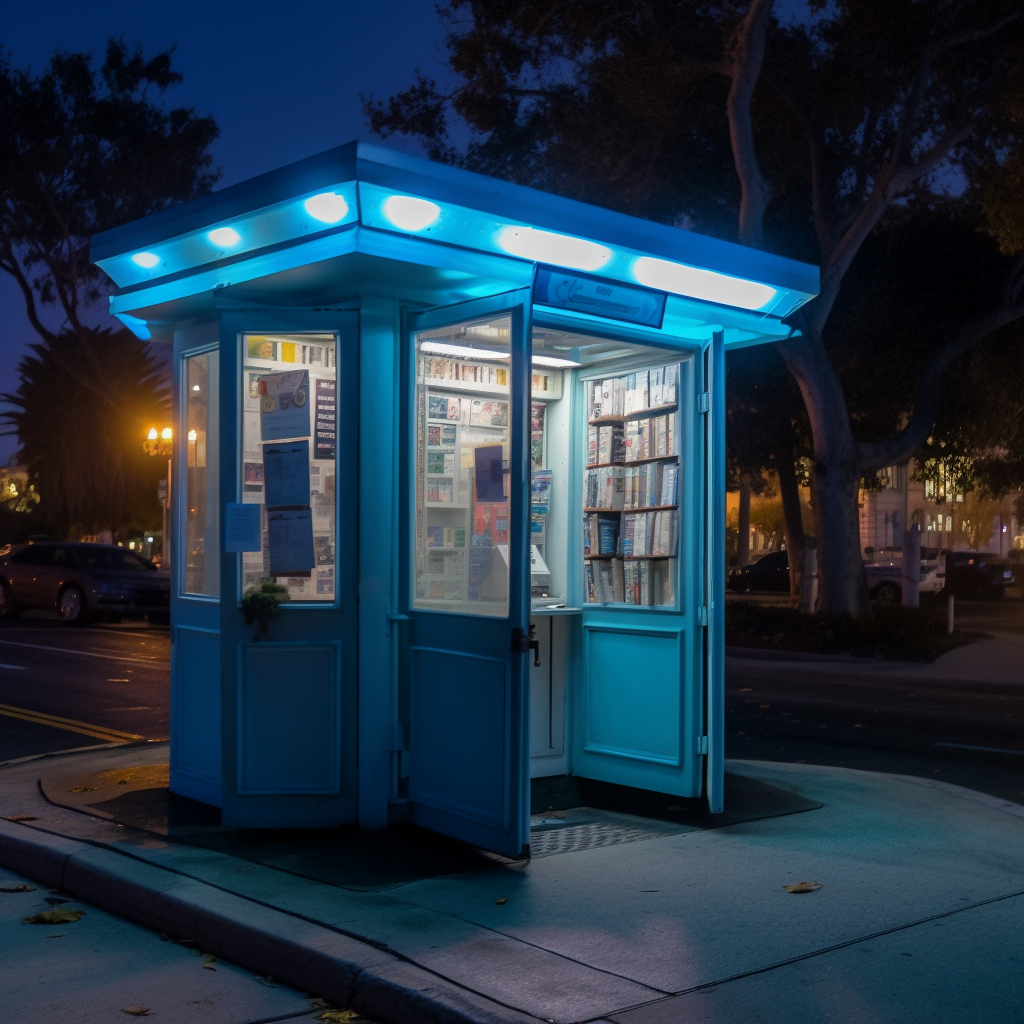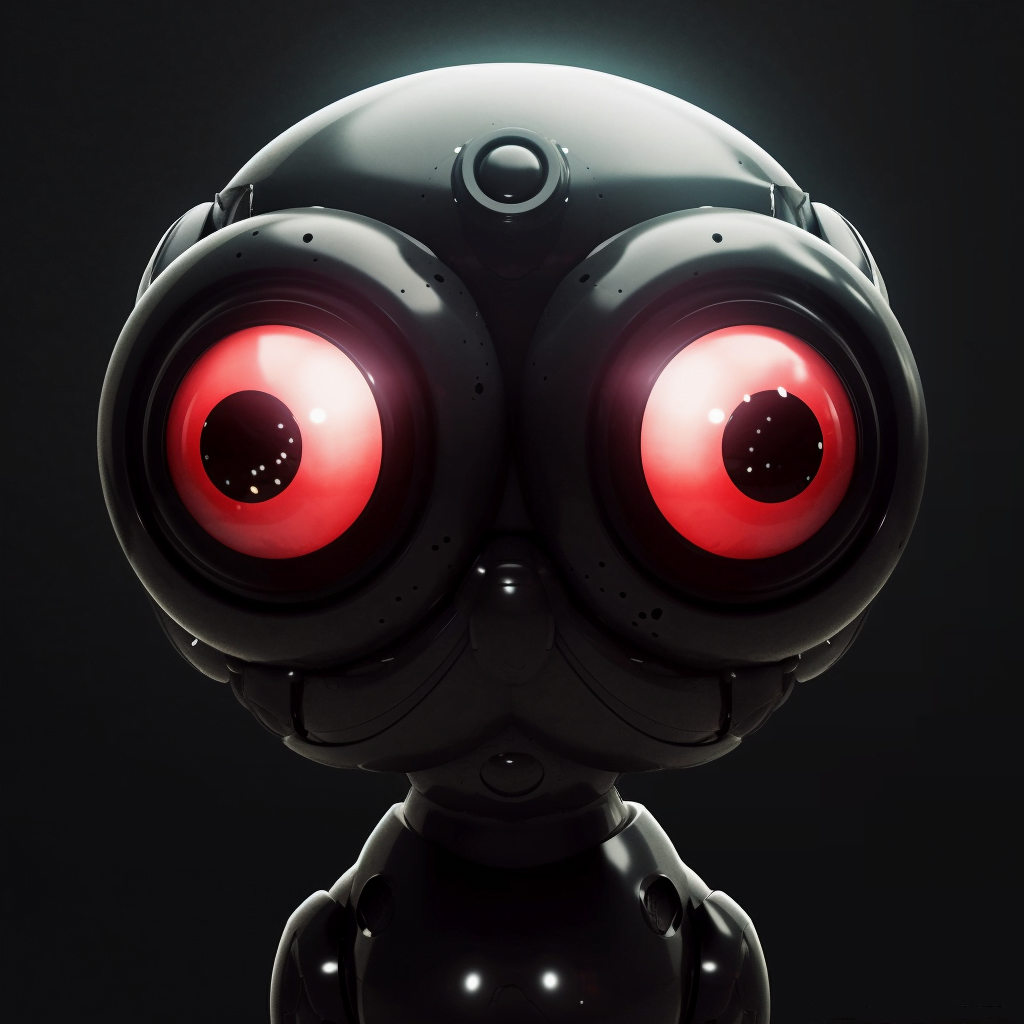
You’re an online creator, with your hand hovered over the mouse, ready to click ‘generate’ on Midjourney, one of the hottest AI image generator platforms around today. A series of intricate designs flood your screen, each more enchanting than the last. Suddenly, a thought flutters across your mind, a fleeting concern about the copyright of these dazzling visuals.
Can you freely use Midjourney images in your books, blogs, and art?
The popularity of Midjourney has surged amongst artists, designers, and entrepreneurs this year, with million of users already under their belt. Its innovative approach has blurred the line between artificial and human artistry, posing a set of unique and complex questions about copyright laws.
This article aims to unravel these questions, providing you a comprehensive understanding of Midjourney’s copyright structure so you know what you can and can’t do with your own business.
TLDR: Can You Use Midjourney Images Commercially?
As a paid member of Midjourney, you have access to a broad scope of rights, but also a set of responsibilities to respect. You don’t have these if you aren’t a paid member (ex. on a free trial).
Here is a summary of the key rules and caveats for paid users:
- You kind of “own” all the assets you create with Midjourney. But these assets can still be used and remixed by others within the Midjourney community. Midjourney also retains perpetual, non-exclusive, and worldwide rights and the right to sublicense, reproduce and prepare derivative works.
- Although you have rights to the images you create, you must not claim exclusive ownership or authorship of these images, or imply any endorsement by Midjourney.
- You’re granted the right to use your Midjourney-generated images for commercial purposes.
- Your use of the images or the platform must not be unlawful, defamatory, obscene, harmful, or infringing on the rights of others. This rule applies regardless of the purpose or context of usage.
- You must not use the images or the platform in any way that could harm or interfere with Midjourney’s services, systems, or networks.
- While free users are not granted commercial rights, as a paid user you are. However, it is crucial to abide by the licensing terms and conditions to avoid any potential legal implications.
Remember, the key to making the most of Midjourney while steering clear of legal issues is understanding and adhering to the platform’s terms and conditions.
If you want to know more about the commercial terms of Midjourney, let’s keep reading and start by understanding the odd approach that Midjourney takes.
What Does Midjourney Believe in?
Midjourney is more than just another digital tool – for many, it is a revolution in the realm of art creation. By utilizing advanced artificial intelligence, Midjourney not only brings about a whole new array of artistic possibilities, but also pioneers a unique approach to creativity.
The cornerstone of Midjourney’s philosophy is the creation of a collaborative space for artists and art enthusiasts alike. Its aim is to transcend the barriers of conventional art, where creation is typically a solitary endeavor.
Instead, Midjourney promotes a community where art is shared, recycled, and transformed, effectively creating an ongoing dialogue of visual expression among its users. This interplay between creativity and collaboration has fostered a vibrant community of users who continue to push the boundaries of what AI can achieve in the sphere of art.
Understanding Midjourney’s Terms and Rights
In the nuanced world of digital creation, understanding the allocation of rights is crucial. Midjourney has crafted a balanced rights framework that respects both the platform’s role in facilitating art creation and the user’s contribution.
Midjourney, as the platform enabling the creation of these images, reserves perpetual, non-exclusive, and worldwide rights.

This means that while the platform can use these images anytime they want, they are not exclusively theirs, and their usage is not limited to any specific region or time period.
Importantly, while Midjourney retains these rights, the user is not left without their fair share of control. Users maintain ownership of the assets they create with Midjourney. This ownership empowers them with the discretion to allow others to use their creations, further fostering the platform’s philosophy of collaborative art creation and sharing.
Rights of Non-Paid Users on Midjourney
While free access to Midjourney unlocks a world of artistic potential, it doesn’t equate to unrestricted usage.
Non-paid users’ creations are licensed under the Creative Commons Noncommercial 4.0 Attribution license. This means that while users are free to share and adapt their creations, their use is confined to non-commercial purposes.
As in, if you are a non-paid user, you can’t use or sell your Midjourney images for money.
Moreover, this license requires that appropriate credit be given. This entails providing a link to the license, indicating if changes were made, and doing so in a way that does not suggest the licensor endorses you or your use.
Rights of Paid Users on Midjourney
Paid users enjoy an expanded scope of rights. Subscribing to Midjourney’s Basic, Standard, or Pro plans grants users commercial usage rights. This allows creators to monetize their creations, amplifying the potential for economic gain from their artistry.

But even within the paid tier, exceptions exist.
For instance, corporate users with an annual revenue exceeding $1 million do not fall under the standard commercial usage rights. This is to ensure fair usage and maintain a balance between individual creators and larger corporate entities, who have a different scale of potential commercial application.

Understanding Commercial Use and Examples
The term ‘commercial use’ might seem straightforward at first, but it can be quite intricate, particularly in the digital sphere. In the context of Midjourney, ‘commercial use’ includes a wide array of applications that are aimed at generating profit.
- Marketing Campaigns: Utilizing the images in print or digital ads to attract customers.
- Merchandise: Printing the images on various products like T-shirts, mugs, posters, etc., for sale.
- Brand Identity: Incorporating the images in a company’s logo or other branding elements.
- Website Design: Using the images as part of the website’s aesthetic to enhance user engagement and potentially increase conversions.
- Social Media Content: Sharing the images on a business’s social media platforms to gain attention and increase followership.
- Book and Album Covers: Designing covers for books, music albums, or podcasts.
- Commercial Videos: Using the images as part of animations or backgrounds in videos made for commercial purposes.
- Digital and Physical Art Sales: Selling the images as individual pieces of art, either in digital format or printed on physical mediums.
- Video Games: Incorporating the images in the design or environment of a commercial video game.
- Educational Materials: Using the images in paid courses or training materials to make them more engaging.
Essentially, if the images generated through Midjourney are used in a way that directly or indirectly contributes to generating income, it is considered commercial use.
Recent Copyright Ruling on AI-Created Images
In the swiftly evolving world of AI-generated content, the landscape of copyright law is rapidly changing. A recent, game-changing ruling by the US Copyright Office set a new precedent for AI-created images, carrying significant implications for platforms like Midjourney and their users.
In this particular case, the comic book ‘Zarya of the Dawn‘ had applied for copyright protection for its illustrations, which were generated by Midjourney’s AI. However, the U.S. Copyright Office ruled that these illustrations were not protected by copyright law. Despite the author’s claims, the letter from the Copyright Office states,
“A person who provides text prompts to Midjourney does not ‘actually form’ the generated images and is not the ‘master mind’ behind them. […] The information in the prompt may ‘influence’ generated image, but prompt text does not dictate a specific result.”
While the text of the publication written by Kristina Kashtanova was covered by copyright, the drawings made by the AI program Midjourney did not receive the same intellectual property protections. The Copyright Office clarified,
“Because the current registration for the Work does not disclaim its Midjourney-generated content, we intend to cancel the original certificate issued to Ms. Kashtanova and issue a new one covering only the expressive material that she created.”
What this means for users of Midjourney and similar platforms is that while they may own the assets they create with Midjourney, these assets are not eligible for copyright protection in the U.S. if the images are generated without significant human intervention.
However, it’s important to note that this ruling is specific to the U.S. and may not hold in other jurisdictions. Users of Midjourney and other AI-generated image tools must remain aware of their local copyright laws and the terms of use of the platforms they engage with.
There is also a large lawsuit facing several of the big AI image generators that is still ongoing.
Copyright Variations Around the World
In the global landscape of the internet, it’s crucial to understand that copyright laws are not universal. They vary significantly across jurisdictions, meaning what might be permissible in one country could be a violation in another.
For example, while the United States and many European countries have detailed regulations regarding copyright protection for AI-generated content, other regions might lack such comprehensive legislation. These disparities can create complexities when the AI artwork crosses borders, whether physically (like selling a print of an AI-generated image) or digitally (such as online distribution or display).
In the realm of AI artwork, the act of selling or transferring rights becomes a significant point of consideration.
Transferring rights to AI artwork might be more complex due to the unique nature of its creation and the evolving legislative landscape. As such, anyone considering selling or otherwise distributing AI-generated images should familiarize themselves with the copyright laws specific to their jurisdiction, and ideally, seek legal advice to ensure they are acting within the confines of the law.
Frequently Asked Questions (FAQ)
Navigating the world of AI-generated content, especially with respect to copyright laws, can be a challenging endeavor. This section answers some of the most commonly asked questions users may have about using Midjourney and its implications on copyrights and commercial use.
Can I Use Midjourney Images for Commercial Purposes?
Yes, you can use Midjourney images for commercial purposes if you’re a paid subscriber. Non-paid users, however, are only allowed to use the images for non-commercial purposes under the Creative Commons Noncommercial 4.0 Attribution license.
Is Midjourney Content Royalty-Free?
While Midjourney does not claim ownership of the images generated on its platform, the terms of use stipulate that Midjourney retains perpetual, non-exclusive, and worldwide rights to these images. Therefore, it’s not accurate to consider Midjourney content as entirely “royalty-free.”
Are Midjourney Images Free to Use?
Yes, but with some limitations. If you’re a free user, you’re allowed to use the images generated by Midjourney, but only for non-commercial purposes and with proper attribution. Paid users are granted commercial use rights, with some exceptions for corporate users with over $1 million in annual revenue.
Who Owns the Copyright to Images Generated by Midjourney?
In light of the recent US Copyright Office ruling, images created purely by AI without significant human intervention are not eligible for copyright protection. However, users “own” the assets they create with Midjourney and can allow others to use them, as long as the usage complies with the platform’s terms and conditions.
How Does the US Copyright Ruling Affect My Use of Midjourney?
The recent US Copyright Office ruling means that if you’re using AI-generated images without significant human input commercially, they’re potentially open to use by others without the need for permission or licenses. However, users still need to abide by the terms and conditions set by Midjourney.
Does Midjourney’s Copyright Policy Apply Internationally?
The recent US Copyright Office ruling applies to the United States, but copyright laws vary across jurisdictions. Users outside the United States should consult local copyright laws when using AI-generated images. It’s also crucial to comply with Midjourney’s terms and conditions, which apply to all users regardless of their geographical location.
Can I Use Midjourney Images in Blogs?
Yes, if you’re a paid user, you can go right ahead as you somewhat ‘own’ the images, but they aren’t copyrighted. If you’re a non-paid user, you still can use them, but you need to attribute them using CC by 4.0.
Takeaway
Understanding Midjourney’s terms and conditions for image usage isn’t a choice; it’s a necessity, irrespective of whether your use is personal or commercial. With the landscape of AI-generated content and copyright law in constant flux, staying informed is more important than ever.
But now after reading this article, I hope you have the knowledge to navigate Midjourney’s platform with confidence and compliance.
Happy prompting!
Disclaimer: We are not lawyers and this article just constitutes a collection of information on the internet. For more specific terms, conditions, and licensing policy, please read through Midjourney’s website on the topic and/or consult a real lawyer if needed. This information may also change from time to time at Midjourney’s discretion and might not be reflected in this article.
Dirígete aquí para la versión en inglés de Are Midjourney Images Copyrighted?




